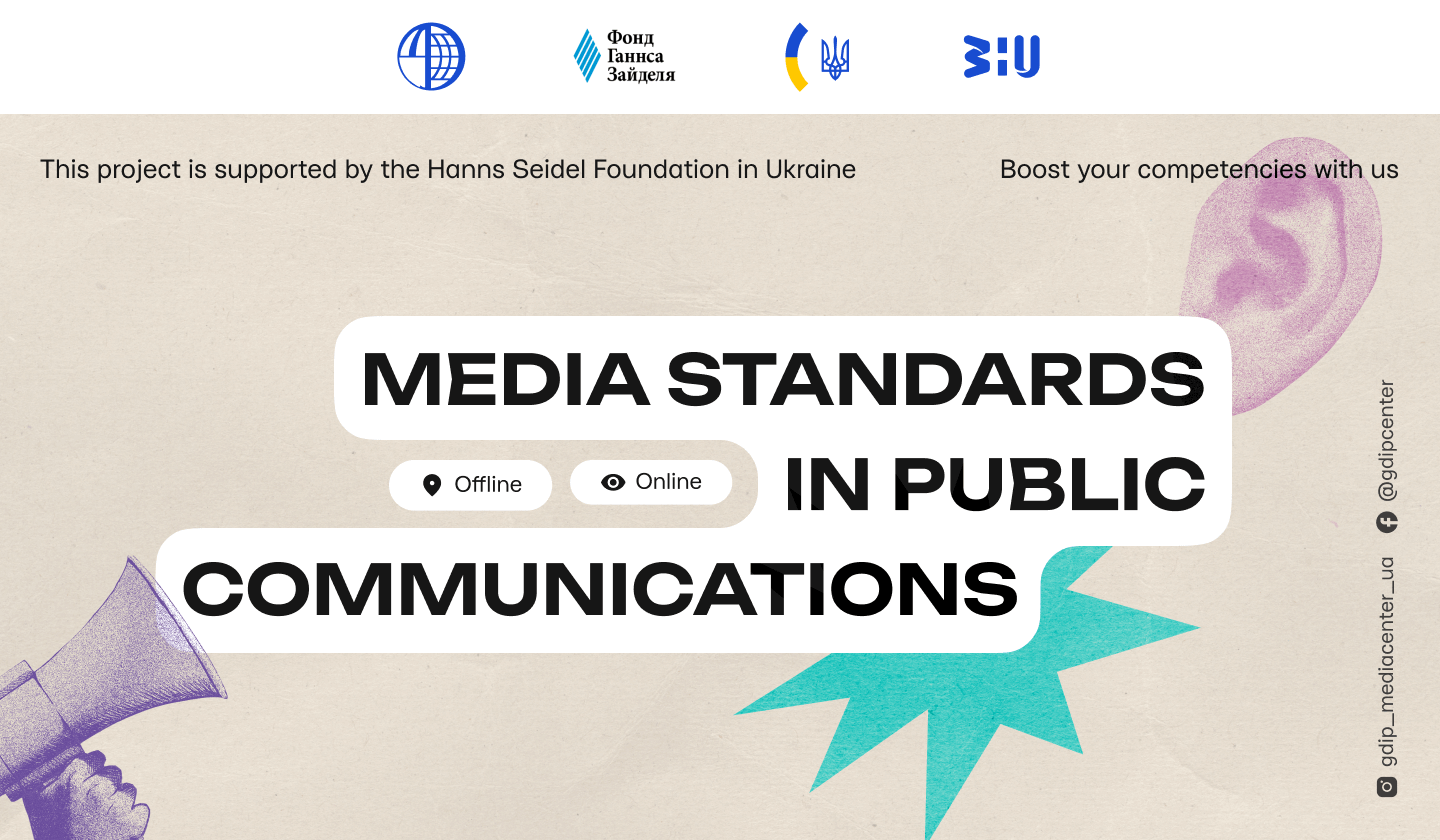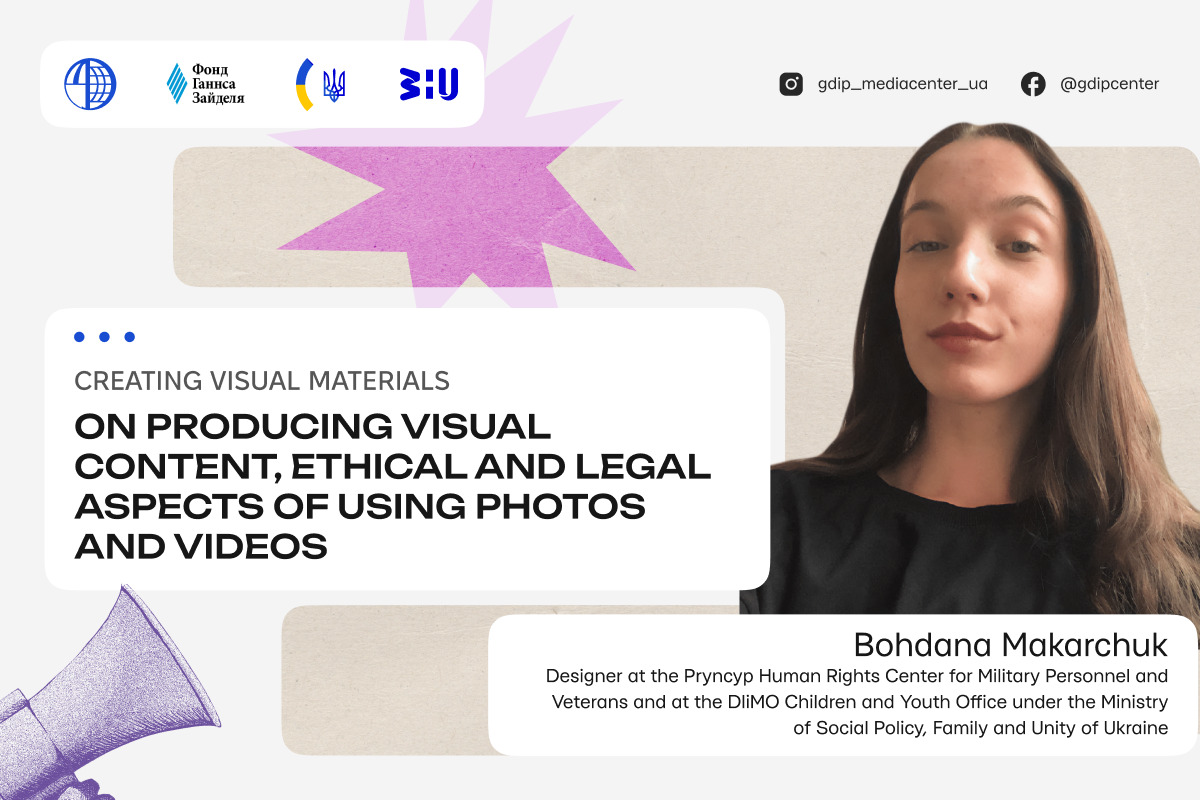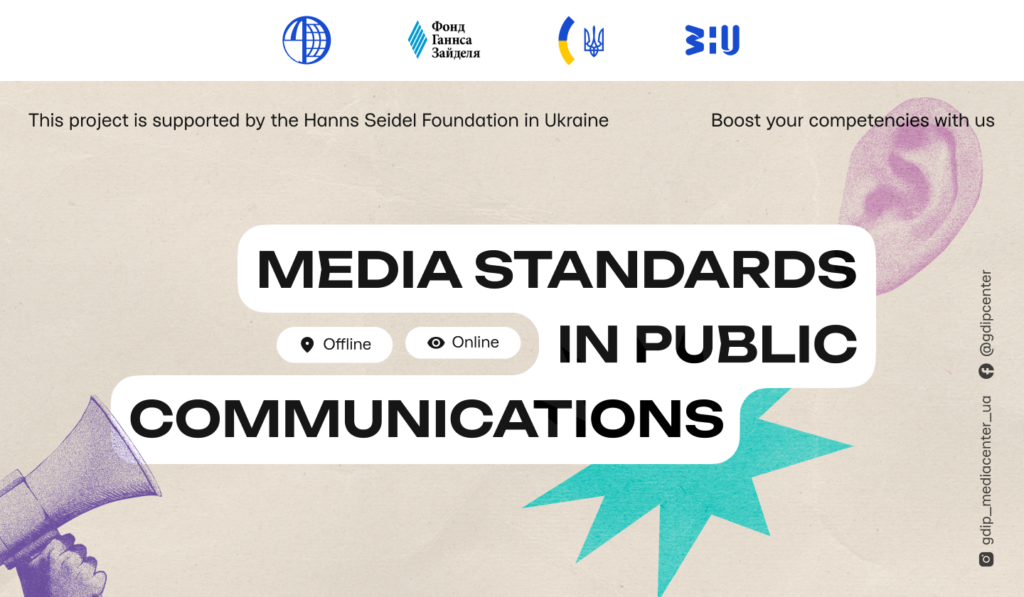The training course on Media Standards in Public Communications continues at the GDIP Media Center. The programme is organised by the team of the Directorate-General with the support of the Hanns Seidel Foundation in Ukraine, the Ministry of Foreign Affairs of Ukraine, and the West Ukrainian National University.
On Monday, 3 November, Otar Dovzhenko, media expert and Creative Director of Lviv Media Forum, delivered a lecture titled How to Speak to People in a Human Way. The speaker discussed the culture of language and the importance of clear and accessible communication in the public sphere:
‘Plain language is the language that prioritises the needs of those we are addressing, i.e. the reader, listener, viewer.’
The lecturer emphasised that official communication is often dominated by bureaucratic and coded language, which hinders understanding, whereas the primary goal of public communication is to be accessible and useful to the people. Otar Dovzhenko also outlined the key principles of effective writing, including defining the purpose, understanding the audience, maintaining a logical structure, starting with the main point, presenting arguments supported by facts, and concluding with a clear call to action.
On Wednesday, 5 November, Vasyl Kyrylych, Ambassador Extraordinary and Plenipotentiary of Ukraine to Croatia, delivered a lecture on rhetoric and public speaking techniques. The Ambassador spoke about the power of words in life, social communication, and official discourse. He emphasised that words can elevate or diminish a person, influence the course of history, and shape the consciousness of society. He called the audience to pay close attention to the content, form, and emotional tone of speeches:
‘A word is not a form or an empty sound. It is the meaning that fills both me and you, that uplifts or, at times, weakens.’
Vasyl Kyrylych also reflected on historic speeches that have changed the world and shared his own principles for preparing and delivering addresses, highlighting that the best improvisation is the well-prepared one.
On Friday, 7 November, training participants attended a lecture on creating visual materials and the ethical and legal aspects of using photos and videos by Bohdana Makarchuk, designer at the Pryncyp Human Rights Center for Military Personnel and Veterans and at the DIiMO Children and Youth Office at the Ministry of Social Policy, Family and Unity of Ukraine. The expert shared her professional experience as a media designer and spoke about the key principles of effective design for textual materials. She emphasised that design in media is not about decoration but about meaning, as visuals should help the audience grasp the main idea, quickly process information, and perceive the emotional context:
‘People ignore the design that ignores people.’
This phrase became the leitmotif of the lecture — a reminder that the focus of any visual solution should be on people and meaning rather than colours or fonts. Bohdana Makarchuk also elaborated on the influence of context on design, the role of the target audience, and the importance of honesty and simplicity, outlining four fundamental design principles: contrast, repetition, alignment, and proximity. The expert also addressed responsible use of visual content, image fact-checking, and ethical communication in the media, highlighting the need to verify photo sources, avoid unrelated visuals, and always label illustrative images.
The participants of the Media Standards in Public Communications training course actively engaged with the speakers, asking numerous questions.






